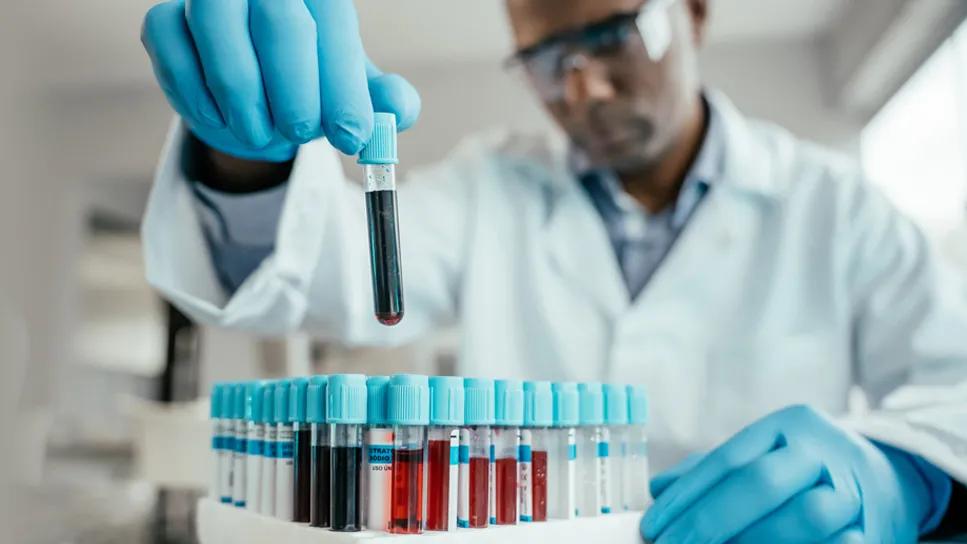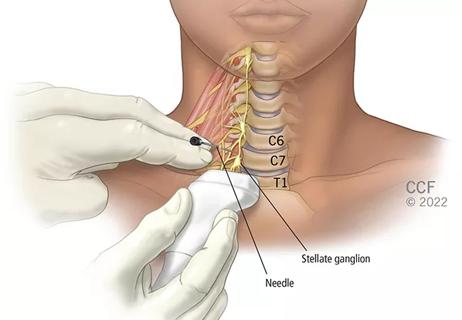Cleveland Clinic analysis suggests that obtaining care for the virus might reveal a previously undiagnosed condition

Cleveland Clinic research suggests that higher rates of Type 2 diabetes in COVID-19-positive patients might be due to getting diagnosed during care, not a sudden spike in blood sugar levels.
Advertisement
Cleveland Clinic is a non-profit academic medical center. Advertising on our site helps support our mission. We do not endorse non-Cleveland Clinic products or services. Policy
Researchers analyzed blood sugar rates over time in patients who tested positive for COVID-19 and those who tested negative to address questions about how the virus affects the pancreas and blood sugar regulation. The findings, published in Diabetes, show the difference between COVID-positive and COVID-negative patients was clinically insignificant, despite COVID-positive patients being 40% more likely to be diagnosed with Type 2 diabetes mellitus (T2DM).
“The results suggest the COVID-positive patients could have been less likely to receive a Type 2 diabetes diagnosis if they had tested negative, just due to the extra clinical attention they receive during COVID management,” says Daniel Rotroff, PhD, Department of Quantitative Health Sciences.
The investigation provides important perspective for clarifying the long-term effects of COVID-19. T2DM is already regarded as a risk factor for severe illness from COVID-19. More than 37 million Americans have diabetes; Type 2 diabetes makes up 90%-95% of those with the condition.
COVID-19 has been associated with inflammation of the pancreas and sometimes acute pancreatitis. The virus also has been found in pancreatic cells that produce insulin. Combined with a trend of patients being diagnosed with T2DM after a COVID-19 diagnosis, this evidence sparked concern about COVID-19 causing diabetes.
Previous studies suggested the disease may affect glycemic function, but those studies lacked a control group of similar patients who were COVID-negative. The Cleveland Clinic team investigated this further by comparing patients who tested positive for COVID-19 to a large population of people who tested negative, Dr. Rotroff said.
Advertisement
The analysis used Cleveland Clinic data from more than 20,000 patients, pulling information for a blood sugar test called HbA1c. Patients included in the study were not necessarily seeking out care for COVID-19 symptoms; some tested positive during screenings for another procedure.
Researchers analyzed blood test information from up to a year between the last blood sugar test and a positive or negative COVID-19 test to see whether blood sugar levels spiked near a COVID-19 diagnosis.
“Previous studies have shown that patients’ HbA1c levels tend to go up after testing positive for COVID-19,” Dr. Rotroff says. “We observed the same thing. However, HbA1c also goes up over time in patients that tested negative for COVID-19, which means it is probably just a general characteristic rather than anything due to COVID.”
The study highlights the importance of routine medical care and undergoing recommended screenings, says Kevin Pantalone, DO, a co-author on the study and Director of Diabetes Initiatives in Cleveland Clinic’s Department of Endocrinology.
The United States Preventive Services Task Force recommends T2DM screening for adults aged 35 to 70 years who have excess weight or obesity.
“When patients do not interact with the healthcare system regularly, this essential screening is not performed, leading to a missed opportunity to diagnose the disease early,” Dr. Pantalone says. “Unfortunately, this is very common, with the medical literature suggesting that patients with Type 2 diabetes have had the condition for about 5 years prior to the formal diagnosis being made.”
Advertisement
Advertisement

Dynamic modeling improves the accuracy of outcome predictions for ICU patients

A review of IDSA and NIH guidelines

Study sheds light on how clinicians addressed their patients’ pain and insomnia during the pandemic

Patients report improved sense of smell and taste

Clinicians who are accustomed to uncertainty can do well by patients

Unique skin changes can occur after infection or vaccine

Will enable patients with long COVID to enroll in national clinical trials

Team collaborates to explore effects of genetic mutations to proteins OAS and RNase L